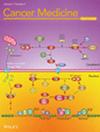Perioperative Trends in Distress Among Cancer Patients: A Systematic Review and Meta-Analysis
Abstract
Introduction
Distress is common among cancer patients, especially those undergoing surgery. However, no study has systematically analyzed distress trends in this population. The purpose of this study was to systematically review perioperative rates of distress, as well as differences across cancer types, in cancer patients undergoing surgical intervention.
Methods
A systematic review was conducted using PubMed, EMBASE, Scopus, and APA PsycINFO (searched until July 17, 2023). Included studies were clinical studies of cancer patients undergoing surgery reporting distress measured by the National Comprehensive Cancer Network (NCCN) distress thermometer (DT). Data on study and patient characteristics, and preoperative and postoperative distress rates were extracted. Results were pooled, and overall distress rates were calculated as weighted means. Subanalysis by cancer type was performed. Three meta-analyses were conducted: (1) preoperative distress, (2) postoperative distress, and (3) change in distress.
Results
Fifty-seven studies including 13,410 cancer patients were reviewed. Most patients were female (67.4%), White (77.8%), and married/partnered (72.2%), with an average age of 59.2 years. The most common cancers were breast (14 studies), brain (8), and colorectal (7). Weighted mean pre- and postoperative distress scores were 5.1 and 4.5, respectively. Distress remained high through 30 days postoperatively, then declined thereafter. Brain cancer patients reported the highest postoperative distress (5.1), followed by breast cancer patients (4.9).
Conclusion
The perioperative phase is a critical period of elevated distress in cancer patients. Preoperatively, patients experience moderate to severe levels of distress, which persist throughout the early postoperative phase, gradually declining from the 1-month postoperative mark onwards.


 求助内容:
求助内容: 应助结果提醒方式:
应助结果提醒方式:


